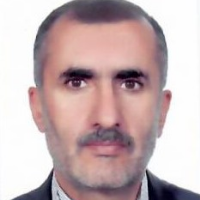Evaluation and assessment of surface energy balance algorithm for land by Landsat 5 satellite imageries to determine water requirement and water productivity of sugar beet by lysimetric data
In recent years, we have witnessed the unsustainable use of water resources, which has led to short-term and long-term water crises. The diversity of water and soil resources, along with climate change, has made the scientific management of agricultural water inevitable. In a such scenario, managing scarce water resources to meet ever-increasing needs is challenging. To make the best use of water resources, it is important to know the amount of water needed for economic production.Determining the water requirement of crops, especially the evapotranspiration potential, indirect ways and in different climates for agricultural and orchard plants is one of the basic strategies of each region. Evapotranspiration (ET) is a process that includes two parts: evaporation (evaporation of water from the surface of soil and vegetation and surface water) and transpiration (evaporation of water from plant organs due to plant physiological activities). The purpose of estimating evapotranspiration is to determine the crop’s water requirement, and irrigation planning, and to evaluate the sensitivity of crops’ performance to water deficiency in different stages of plant growth. Sugar beet is one of agricultural crops that is placed in the cultivation pattern and is cultivated in a wide area of the world due to the need for sugar consumption. Determining the evapotranspiration of this crop and planning its irrigation is of particular importance. Numerous studies showed that the water requirement of sugar beet, based on the variety and climate, differs. Various techniques have been proposed to measure ETc, and each method has advantages and limitations. Some of the widely used methods are lysimetric experiments, eddy covariance, Bowen ratio, energy balance method, and soil water balance method. In recent years, new technologies are also used to estimate evapotranspiration, among them, the Surface Energy Balance Algorithms for Land (SEBAL) can be mentioned. This research aims to compare ET, water requirement, and water productivity of sugar beet in lysimetric data to SEBAL algorithm using Landsat 5 satellite images, from 1996 to 1998.
This experiment was carried out at the Chahar-Takhteh research station (Shahrekord, Iran) at latitude 50 ̊56ʹ and longitude 31̊ 11ʹ, 2066 m above sea level.In the spring of 1996, 1997, and 1998, before planting the crop, the soil inside the lysimeter was irrigated to reach the saturation level. Two days after irrigation and at field capacity, monogram seeds of sugar beet, at the rate of 120,000 crops per hectare, were cropped. The row spacing in the field around the lysimeter was similar. Irrigation was based on the discharge of about 35 to 45 % of the moisture content at field capacity. The required amount of water was calculated by the neutron probe and added to the lysimeter. simultaneously, the surrounding area was also irrigated.Remote sensing data included Landsat 5 satellite images for the years of experiment, path 164, and row 38. The temporal resolution of the satellite was 16 days. Spatial resolution for visible, near, and mid-infrared bands was 30 and 120 m for thermal infrared. The 25 cloud-free images were downloaded (6, 9, and 10 images) for research years. These images were retrieved from the website (https://earthexplorer.usgs.gov) as geometrically and radiometrically corrected and processed in ERDAS Imagine 2022 software. To estimate actual evapotranspiration, the energy balance equation is used, λET=Rn-G0-H. In this equation, Rn is the net incoming radiation flux, H is the sensible heat flux, G0 is the soil heat flux, and λET is the latent heat flux of evaporation (W/m2 ). The statistical indicators include mean absolute error (MAE) which is unsigned, mean bias error (MBE), root mean square error (RMSE), normalized root mean square error (NRMSE), and Coefficient of Determination (R2 ).
Evapotranspiration of sugar beet in lysimeter and in SEBAL on the days of satellite passage in 1996 to 1998 (25 overpasses without clouds) showed that the difference of evapotranspiration in the two methods was -1.20 % and -0.13 mm d -1 which showed high accuracy. The negative sign means that the SEBAL estimates were lower than the corresponding values in the lysimeter. The statistical indices values of RMSE, NRMSE, MAE, and MBE for 25 pairs of evapotranspiration values were 0.7031 mm d -1 , 0.1102, 0.5552, and -0.1312, respectively. The RMSE, NRMSE, MAE and MBE statistical indices for 18 pairs of monthly evapotranspiration were 54.1155 mm month-1 , 0.3225, 40.9462, and - 28.7955, respectively. The total values of evapotranspiration in lysimeter were equal to 1096.6, 1022.6, and 906.3 mm during the growth period (total mean equal to 1040.6 mm) from 1996 to 1998, respectively. The total values of evapotranspiration in the SEBAL were equal to 1004.6, 831.6, and 666.4 mm during the growth period, total mean of 834.2 mm. The mean difference was around 19.8%. The results of mean water productivity were 5.02 kg m-3 in lysimeter and 6.26 kg m-3 in SEBAL. Because of lower evapotranspiration values in SEBAL compared to the lysimeter, the water productivity values were higher.
Determining the water requirement of crops is the basis of planning for the sustainable use of water resources and irrigation of crops. The sugar beet has a great amount of evapotranspiration due to its large green cover. Accurate quantification of crop evapotranspiration (ETc) at local and regional scales can help water policy and decision-making in water resources and their management. The results indicated that the SEBAL algorithm using Landsat 5 satellite images with a coefficient of determination (R2=0.9889) in the daily time period and a coefficient of determination (R2=0.9318) in the monthly time period had a good correlation with lysimetric data. In general, results showed that SEBAL has a special capability as one of the widely used remote sensing algorithms to estimate crop evapotranspiration.
- حق عضویت دریافتی صرف حمایت از نشریات عضو و نگهداری، تکمیل و توسعه مگیران میشود.
- پرداخت حق اشتراک و دانلود مقالات اجازه بازنشر آن در سایر رسانههای چاپی و دیجیتال را به کاربر نمیدهد.



